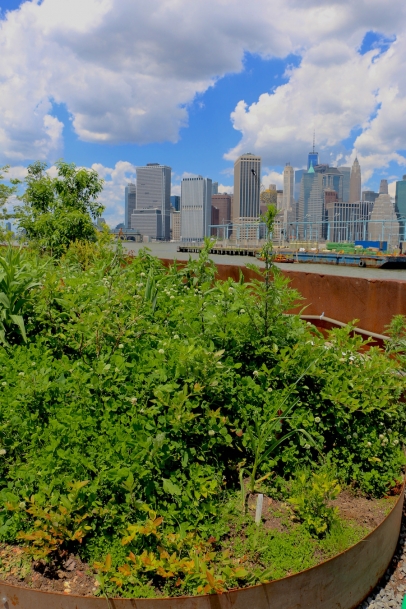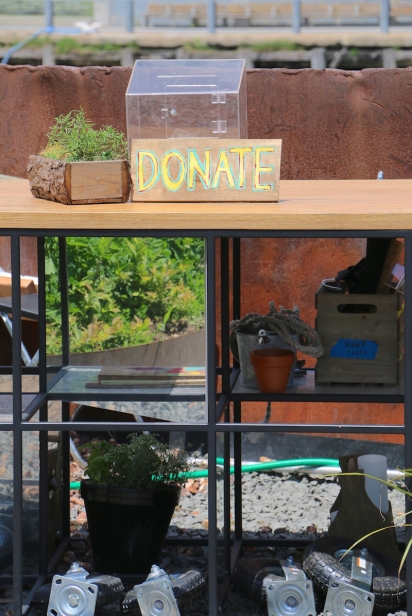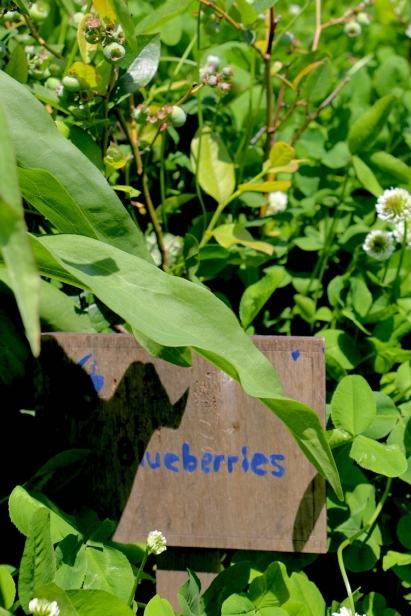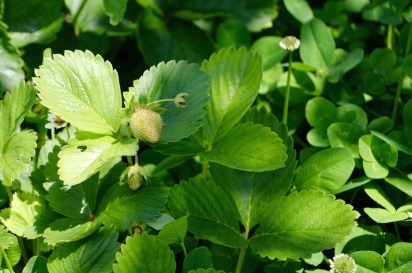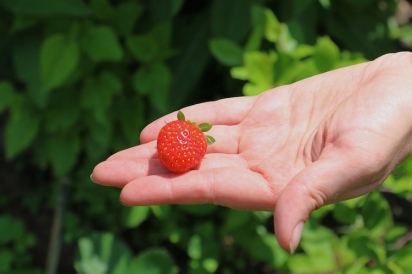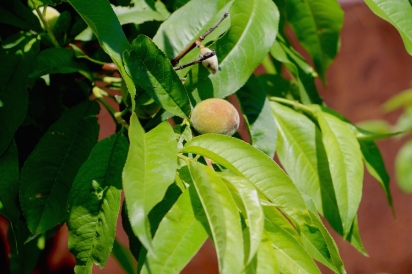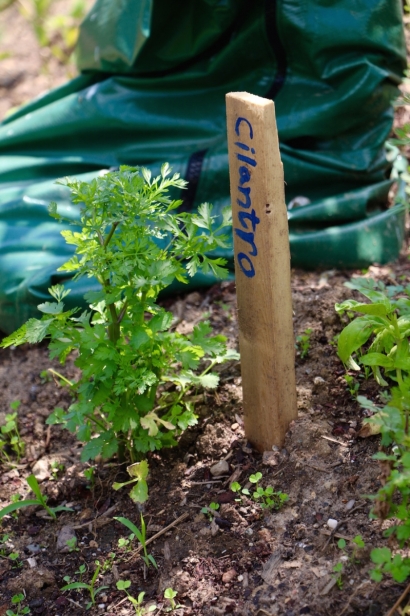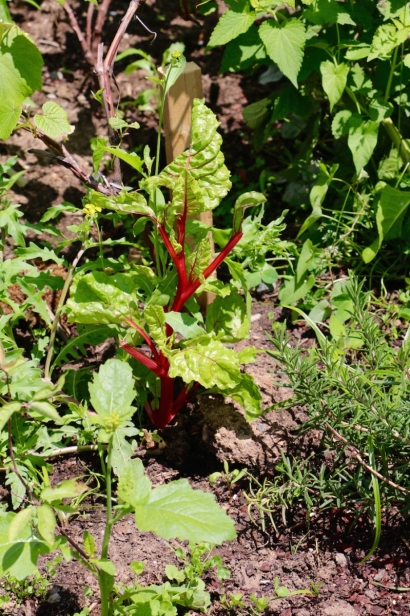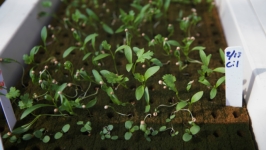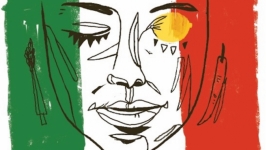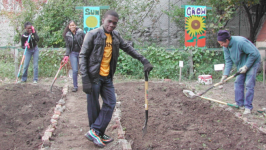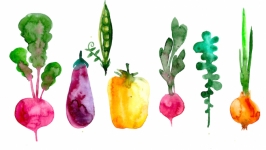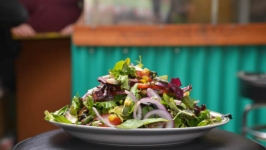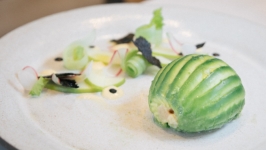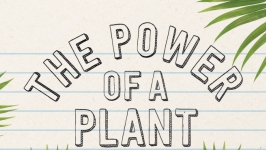This Floating Food Forest Wants to Reshape New York City Parks
What if a trip to your favorite public park could double as a trip to the grocery store? If along with enjoying the open space, sunshine and fresh air you could pick apples, snip kale and harvest tomatoes?
“Dreams are real,” said Marisa Prefer, Swale’s education program manager.
Swale, the edible forest that first sailed into the Bronx last year, returns to the Concrete Plant Park on August 1.
Part public art project, part political statement, part call to action, Swale asks us to reconsider our food systems, confirm our belief of food as a human right and pave the way for public food in public spaces, says founding artist Mary Mattingly.
Mattingly and Prefer debuted Swale as a 130- by 40-foot floating forest in July 2016. Docking first off the Bronx and later in Brooklyn, they allowed locals and visitors to hop aboard, pick and sample fresh produce, all for free.
“Last year people were worried we didn’t have enough plants. They brought seeds they had in the back of their closet. We had a lot of great melons, which I wasn’t expecting,” Mattingly says with a laugh as she shows me around Swale.
But for all the positive response, they hosted roughly 60,000 visitors last year. When Mattingly and Prefer brought the barge to the Hudson Valley for the winter they weren’t certain if they’d be able to return it to NYC for this year’s harvest season. Thanks to partnerships with the NYC Parks Department, among other NYC organizations and a corporate sponsorship from Strongbow Apple Ciders, Swale is back and bigger than before, now with 4,000 square feet of edible forest and more than 200 edible and medicinal plants including a hill of apple trees, blueberry bushes and twisting willows. There are also more volunteers on hand, ready to show visitors the plants, and explain the process that allows them to grow. Free educational workshops include lessons on weaving and rope making with plants, dyeing with natural pigments and many more topics, offer additional ways for people to get involved.
“We want to show people what’s blooming and edible and encourage them to pick away,” says Prefer. “And then show how to bring these principles to public spaces, stewarding the land.”
More than its increased size, when Swale returns to the Bronx this year it will be with the knowledge that what started as a public art call to action could help to reshape NYC Public Parks. The Swale team has begun working with the Parks Department on a plan to turn a part of the Concrete Plant Park into an edible public foodway. They’re expecting to break ground in late June. It’s a concept that, while not new (there are public foraging parks in Seattle, Boston, North Carolina and elsewhere around the world) is novel in New York City, where foraging in public parks is actually illegal. Since 2011, the city has worked to enforce the no-foraging law, training park officials and officers on how to spot those who might want to make off with an apple, mushroom or berry.
Growing up in New York, Mattingly dealt with water issues, predominantly clean water issues, which spurred her interest in how we use water.
“I think the more people that we can get water to the safer it is, and we should think about food that way as well,” Mattingly says.
The artist has built other self-sustaining mobile environments, including the floating Waterpod and Wetland, but Swale was largely inspired by the community. While she was working on Waterpod, a self-sustaining barge for artists in the Bronx, someone asked Mattingly, “Why don’t you grow a food forest?”
From the moment you lay eyes on Swale it forces you consider how every bit of space as well as water is used. Powered by solar, the design of the barge creates a saltwater marsh around the edge of the boat. That water is then cleaned and desalinated and used to irrigate the crops on the barge. Everything is designed to be self-sustaining.
The space is smaller than you’d expect, considering the number of plants growing on it. Using permaculture, Swale stack grows—meaning that as the harvest season progresses they can grow more edible plants as every space can grow at least two if not more plants, with salt tolerant plants (think tomatoes), sea kale and artichokes growing on the outside of the barge helping to protect other plants from potential saltwater spray. Those who visited last year will notice that, in addition to the increase in plants, the space feels less like a container garden and more like a forest thanks to the addition of more soil, gravel and lava rocks and the hill the apple orchard sits upon.
This spring Swale was docked at Brooklyn Bridge Park, Pier 6, with the hope of traveling to several different piers before heading to the Bronx for the late summer and fall.
“We’re super excited,” says Prefer. “We wanted to reach more people and we can take it with us going to neighborhoods where’s there’s not much greenspace, showing people how to plant and collect wild plants.”
You can visit Swale Thursday–Sunday noon to 6 pm at Concrete Park in (If there’s a more than 50 percent chance of rain they won’t be open), and to help keep Swale open for years to come please donate to their Indiegogo campaign. swaleny.org


